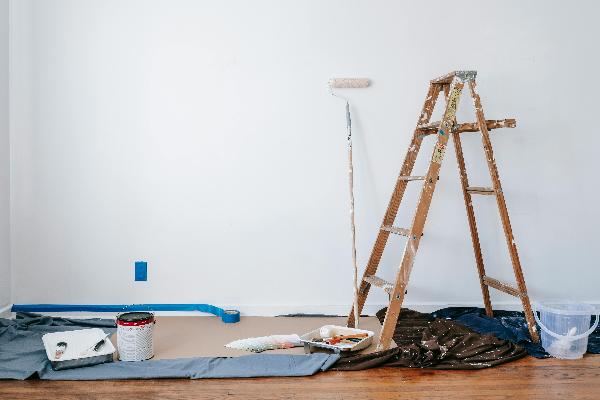How to Incorporate Smart Technology into Your House

Strong 8k brings an ultra-HD IPTV experience to your living room and your pocket.
Maintaining your living space is no easy feat. From routine cleaning to periodic repairs, maintenance tasks may often feel overwhelming and unmanageable, even for experienced homemakers.
Fortunately, the rise of smart technology has paved the way for more efficient maintenance practices. This innovation has become more popular today, especially with the number of houses incorporating smart home tech increasing steadily over recent years. As such, people looking to streamline their maintenance tasks will do well to leverage this revolutionary approach to homemaking.
But how can smart home technology help fix up your place? Read below to find out more about smart home maintenance.
What is Smart Home Maintenance?
Smart home maintenance leverages automation and remote technology to optimize household management and upkeep. It integrates intelligent and interconnected systems to monitor, control, and maintain a home efficiently. Various smart technologies can enhance your living experience by making routine tasks more manageable—from Wi-Fi-enabled bulbs to programmable appliances.
This technology can also improve home protection. Emerging security systems, like video doorbells and cloud-based cameras, let you monitor your property remotely, receive real-time security alerts, and interact with visitors at the front door regardless of where you are. In effect, you can leave your home without worrying about its safety.
Additionally, financing house improvements through smart home technology can offer long-term savings on energy bills and increase property value while contributing to a more sustainable lifestyle.
5 Tips for Smart Home Maintenance
Smart home technology allows you to leverage automation to create a more efficient and comfortable living environment. Here are some tips to help you incorporate these systems into the key areas of your home.
Living room
Family members and visitors gather in your living room, which is why you can often find the most energy-intensive appliances here. A television, sound system, video game console, and air conditioning unit are usually present in the living room, making it one of the most power-hungry areas of your house.
Fortunately, using your living room appliances doesn't necessarily have to break the bank. Smart devices can improve their energy efficiency and minimize your electricity bill. For instance, smart thermostats automatically adjust temperature settings in the living room for optimal performance. You can set it to lower temperatures during the day and automatically shut it off at night.
Also, energy-saving power strips can cut electricity from idle devices and eliminate wasteful standby consumption. However, consider using smart plugs if you want more control over your appliances' energy usage. They allow you to turn appliances on or off remotely and create operation schedules to ensure you don't leave devices running when not in use.
Kitchen
The kitchen houses numerous appliances and equipment since it's where food preparation and dishwashing happen. However, operating these devices can sometimes be tedious, especially during busy days when you don't have enough time to prepare meals.
Smart appliances offer undeniable benefits for your kitchen. Take programmable coffee makers, for example. You can schedule them to brew coffee at specific times, ensuring a fresh cup when you wake up or at other preferred times. Smart dishwashers also operate on energy-efficient technology to optimize water usage and reduce power consumption without compromising cleaning performance.
Take your automated practices even further by incorporating a smart hub into your kitchen, such as the Amazon Echo and Apple HomePod. These kitchen innovations allow you to monitor and control appliances from a single interface to create a more efficient kitchen workflow. You can also use them to reduce energy consumption by remotely switching devices off when idle.
Bathroom
Bathrooms are challenging to maintain, given the importance of hygiene and functionality in this area. Fortunately, incorporating smart devices improves cleanliness and conservation significantly, which is vital during the current health and water crisis.
An automatic soap dispenser is a basic fixture you can incorporate into your bathroom. It prevents users from touching soap bars or traditional pumps, reducing the spread of dirt and germs within your home. Additionally, motion sensor faucets detect hand movement and automatically dispense water. With this, you can by ensuring users won't leave the tap running.
Moreover, mold and mildew are your enemies in the bathroom. Uncontrolled growth may damage appliances and furniture. Fortunately, smart sensors can monitor humidity levels and alert you about potential fungi issues for quick solutions. Also, automated ventilation systems help control moisture levels, preventing mold growth and maintaining a healthy bathroom environment.
Bedroom
A comfortable and well-maintained bedroom is crucial to high-quality rest. So, consider using smart systems to optimize your sleeping environment. Smart lighting systems are a game-changer—you can adjust their brightness and color and schedule operations from an app to create a relaxing atmosphere that fits your preferences.
Besides this, a programmable thermostat is another essential component in your bedroom. As mentioned, it allows you to regulate temperatures automatically and ensures optimal comfort without unnecessary energy consumption. Moreover, sleep-tracking technology monitors your sleeping patterns to let you make adjustments to improve your sleep quality.
That said, never underestimate the importance of maintaining your bed. Regular mattress maintenance can extend its lifespan and ensure a comfortable place to sleep. Also, consider using smart clocks that do more than tell the time, such as preventing sleep inertia with alarms. Ultimately, these devices combined can help you maximize your bedroom's capabilities.
Crawl spaces and basements
Crawl spaces and basements are vulnerable to water damage. Flooding, leaks, and excess moisture can cause significant structural issues and promote mold growth in these areas. However, leveraging smart systems can minimize their impact.
For example, sump pump systems prevent water damage by removing water from sump basins. It automatically detects water accumulation from the basin, pumping it out and away from your home. In turn, you can avert flooding in the lower areas of your house, especially if your location is prone to heavy rainfall.
These systems also protect residents by reducing the likelihood of mold growth. Excess moisture creates an ideal environment for fungi, posing a significant health risk to occupants and leading to expensive remediation efforts.
While sump pump systems are highly effective, they still require regular maintenance. So, examine the pumps, float switch, and discharge pipe every month to see if they work well. Also, consider installing a generator or backup battery to power the sump pump during power outages, ensuring continuous protection, even during floods and hurricanes.
Live Comfortably with Smart Home Maintenance
Smart home maintenance is revolutionizing how people care for their homes by offering innovative approaches to enhancing their living experience. It lets users enjoy a more comfortable and organized lifestyle, making the house more fulfilling to reside in—not to mention the elevated value they bring to real estate investment.
Expect to attain more control over your living space as technology progresses. So, stay informed about the latest intelligent technology advancements and incorporate them into your house to unlock their full potential.
Note: IndiBlogHub features both user-submitted and editorial content. We do not verify third-party contributions. Read our Disclaimer and Privacy Policyfor details.


